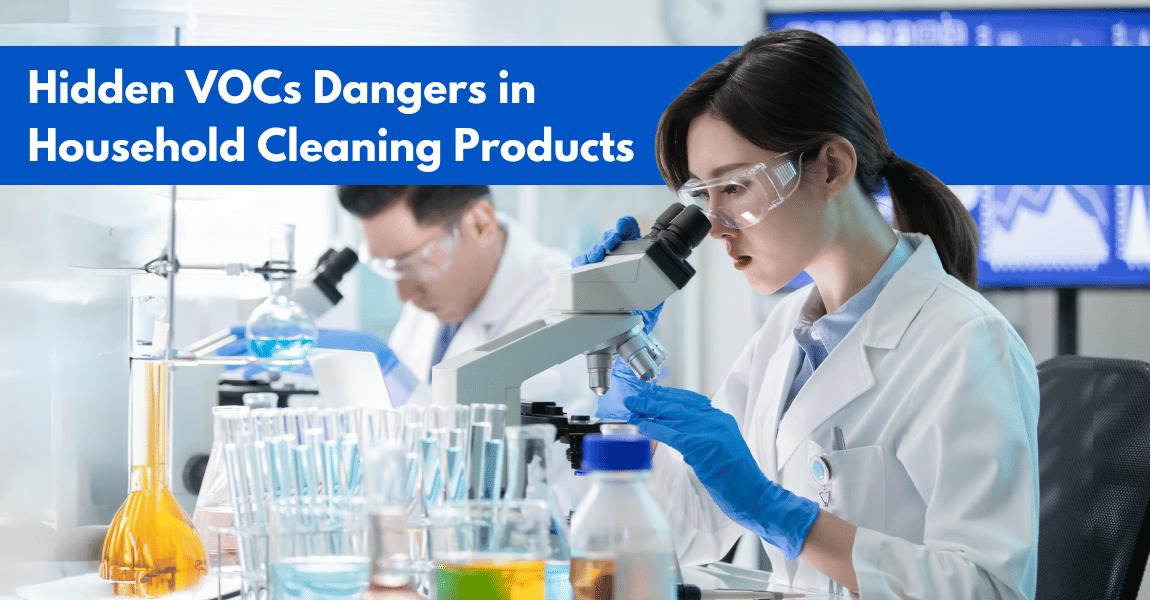In a groundbreaking study conducted by the Environmental Working Group (EWG), significant concerns have been raised about the health risks posed by volatile organic compounds (VOCs) in household cleaning products, including those marketed as "green" or eco-friendly. Published in the journal Chemosphere, the peer-reviewed study, “Volatile organic compounds emitted by conventional and ‘green’ cleaning products in the U.S. market,” examines a variety of cleaners and air fresheners purchased from online retailers between December 2019 and May 2022.
The Scope of the Study
The EWG's research identified a staggering 530 unique VOCs in the 30 products tested, with 193 of these chemicals recognized as health hazards by agencies such as California’s Department of Toxic Substances Control and the European Chemical Agency. Alarmingly, these harmful chemicals can potentially contaminate drinking water, posing even greater health risks.

Health Implications of VOC Exposure
VOCs are ubiquitous in modern manufacturing and can cause severe short and long-term health effects. These range from respiratory issues and neurotoxicity to cancer, with elevated risks for individuals frequently exposed to VOCs, such as workers in specific industries. The study's findings underscore the urgent need for safer alternatives to conventional cleaning products.
Safer Alternatives: Green and Fragrance-Free Products
Research highlights that while green cleaning products do emit VOCs, they do so at a significantly reduced rate compared to conventional products. This makes them a safer choice for consumers. Opting for green and fragrance-free products can significantly lower VOC emissions and reduce exposure to harmful chemicals.
Ensuring Clean and Safe Drinking Water
To safeguard health, individuals must be cautious about their choice of cleaning products and ensure drinking water purity. Utilizing water purification solutions can help keep drinking water free from VOC contamination. Explore available options at Pitcher of Life for effective water purification solutions.
The Call to Action for Consumers, Researchers, and Regulators
Alexis Temkin, a senior toxicologist at EWG, describes the study as a “wake-up call for consumers, researchers, and regulators.” It highlights the necessity for heightened awareness of indoor chemical exposure risks. The findings advocate for the use of green and fragrance-free products as a practical step toward reducing hazardous VOC emissions.
Industry Response and Ongoing Efforts
The American Cleaning Institute acknowledges efforts to reduce VOC concentrations in products but criticizes the study’s classification of products into “green” and “conventional” categories, noting that "green" is a marketing term, not a scientific one. Despite this, the research clearly indicates the critical need for increased vigilance and precaution in choosing household cleaning products to protect health and the environment.

Practical Steps for Reducing Exposure to VOCs
- Choose Fragrance-Free Products: Many VOCs are found in cleaning products' fragrances. Fragrance-free products reduce your exposure to harmful chemicals.
- Ventilate Your Home: Proper ventilation can disperse VOCs released into the air. Ensure that your home is well-ventilated, especially when using cleaning products.
- Use Green Cleaning Products: While not completely free of VOCs, green cleaning products generally emit lower levels of these compounds than conventional products.
- Check Labels and Certifications: Look for products certified by reputable organizations that evaluate cleaning products' safety and environmental impact.
- Consider DIY Cleaning Solutions: Simple household ingredients like vinegar, baking soda, and lemon juice can be effective cleaning agents and are free from harmful VOCs.
The EWG’s study underscores the need for continued research and innovation in safer cleaning products. It also highlights the importance of regulatory oversight in ensuring that products marketed to consumers are truly safe for use.
Manufacturers are encouraged to be transparent about the ingredients in their products. They are also encouraged to invest in developing formulations that minimize harmful VOC release. Consumers, on their part, can drive change by making informed choices and supporting companies that prioritize health and environmental safety.
Conclusion
The findings of the EWG’s study serve as a critical reminder of the hidden dangers lurking in everyday household cleaning products. By choosing safer alternatives and being mindful of the products we bring into our homes, we can protect our health and contribute to a cleaner enviroment.

